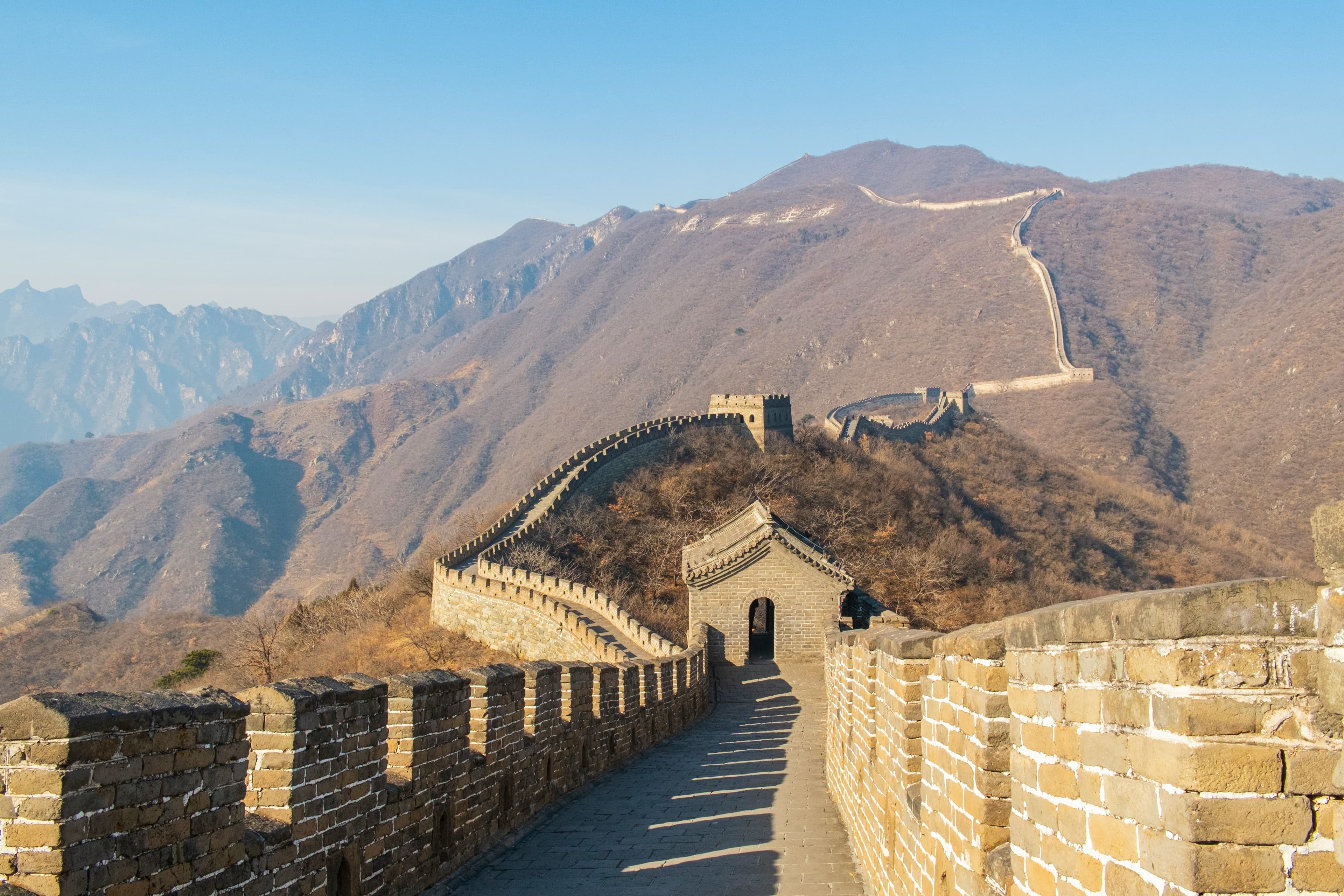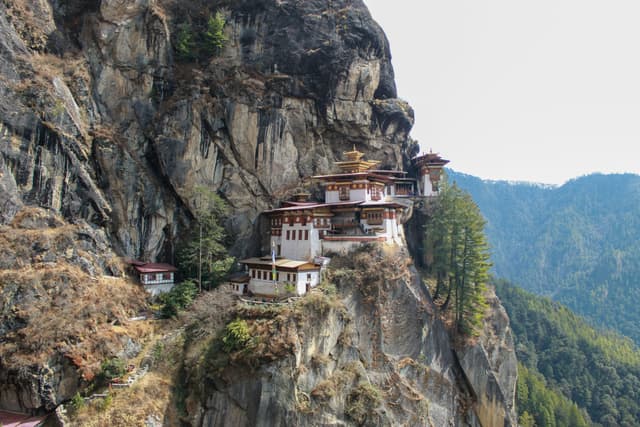To walk the Great Wall of China is to walk through the spine of a civilization. Stretching over 21,000 kilometers, this iconic structure is more than a military fortification — it’s a testament to human will, ancient ingenuity, and the enduring story of a nation that has shaped the world.
The Great Wall isn’t a single wall but a series of walls, watchtowers, trenches, and fortresses built over centuries — across mountains, deserts, and grasslands. It’s not just something you visit; it’s something that reshapes your understanding of scale, effort, and endurance.
The Origins: More Than Just Bricks and Stones
Construction of the Great Wall began as early as the 7th century BCE, during China’s fragmented Warring States period. Each kingdom built its own defensive barriers to protect against nomadic tribes from the north.
It wasn’t until the 3rd century BCE, under Emperor Qin Shi Huang (of Terracotta Army fame), that these walls were unified. He envisioned a single, massive wall to guard the newly unified Chinese empire. And thus began one of the most ambitious construction projects in human history.
But the Wall we see today is largely a product of the Ming dynasty (1368–1644), when it was rebuilt, fortified, and extended using brick and stone. This is the iconic version — the one that snakes like a dragon across green hills and barren mountains, awe-inspiring and seemingly endless.
More Than a Barrier
To think of the Great Wall as just a defensive structure is to miss its depth. It was also a symbol — a statement of power, order, and imperial reach. Watchtowers served not only as lookouts but also as communication hubs. Fires and smoke signals relayed messages across vast distances, often in minutes.
The Wall was also a border control mechanism. It helped regulate trade and migration, and reinforced the physical and psychological boundary between the civilized empire and the so-called "barbarian" lands beyond.
But make no mistake — it was never completely impenetrable. Nomadic tribes like the Mongols often breached it, and empires rose and fell despite its presence. Still, the Wall remains a staggering monument to China's historical quest for security and unity.
Experiencing the Wall: Where to Go
You can't see all of it — and you shouldn't try. Instead, focus on key sections that offer a glimpse into the Wall’s diversity, history, and breathtaking landscapes.
Badaling
The most famous and most visited section, Badaling is fully restored and easy to access from Beijing. While it's often crowded, it provides an excellent introduction to the Wall’s grandeur. Wide stone paths, imposing battlements, and scenic vistas make it popular for good reason.
If you visit early in the morning or in the off-season, you might even find some quiet moments to take in the view and reflect.
Mutianyu
Less crowded than Badaling but equally majestic, Mutianyu is known for its lush greenery and sweeping panoramas. The restoration here maintains historical accuracy, and a cable car can take you partway up for those not keen on climbing hundreds of steps.
The best part? You can ride a toboggan back down. It's a bizarre but thrilling way to descend from one of the most important structures ever built.
Jinshanling to Simatai
For the more adventurous traveler, the Jinshanling-Simatai hike is a dream. This partially restored section offers a rugged, authentic experience. The Wall winds up and down steep ridges, with dramatic views and fewer tourists.
It’s a demanding hike — uneven steps, steep climbs, and exposure to the elements — but it’s also a rare chance to walk alone with history.
Jiankou
Jiankou is the Great Wall at its wildest. Crumbling, overgrown, and hauntingly beautiful, this unrestored section is popular with photographers and thrill-seekers. Be warned: it’s not officially open to tourists and can be dangerous. But for those who go (preferably with a guide), it offers a raw and unforgettable experience.
The Wall Through the Seasons
One of the most beautiful things about the Great Wall is how it transforms with the seasons:
Spring brings soft green buds and cherry blossoms, adding a delicate contrast to the stern stones.
Summer covers the hills in vibrant greenery, offering dramatic vistas but also sweltering heat and crowds.
Autumn is arguably the best time to visit — the foliage turns to fire, painting the landscape in reds, oranges, and golds.
Winter, with snow-covered battlements and quiet trails, lends a solemn beauty and a sense of deep time.
Each season brings its own kind of magic — and mood.
The Human Side of the Wall
The Wall wasn’t built by machines or magic. It was built by millions of human hands — soldiers, peasants, prisoners, and conscripts. The conditions were often brutal. Workers endured searing heat, bitter cold, exhaustion, and disease. Many died, and their remains were said to be buried within the Wall itself, earning it the nickname “the longest cemetery on Earth.”
Visiting the Wall is a chance to honor those who labored and died there. The views may be stunning, but the story is one of sacrifice and suffering — a reminder of the cost of empire.
Beyond the Wall: Life in Its Shadow
While the Wall draws tourists by the millions, life continues in the villages and towns nearby. Exploring them adds richness to your trip.
Gubeikou is a sleepy village with access to unrestored wall sections and a chance to experience rural hospitality.
Huanghuacheng, partially submerged in a reservoir, offers a surreal mix of stone and water.
Shanhaiguan, where the Wall meets the sea, marks the eastern terminus and features the famous “Old Dragon’s Head” diving into the Bohai Gulf.
You can eat hand-pulled noodles in a farmer’s kitchen, sip baijiu (Chinese liquor) in a roadside shack, or spend the night in a guesthouse with views of the Wall lit by moonlight.
Myths, Legends, and Misconceptions
A monument of such magnitude naturally inspires stories — some true, some not so much.
No, the Great Wall is not visible from the Moon with the naked eye. It's impressive, but it’s also relatively narrow and blends with the natural terrain.
Yes, the Wall was breached — many times — especially by the Mongols, who famously rode through and around it.
No, it wasn’t a single continuous wall. It was a network of walls built in different eras, with gaps, overlaps, and reroutes.
And then there’s the legend of Meng Jiangnü, a woman whose husband died building the Wall. Her grief was so intense that a section of the Wall collapsed. It’s a tale of love, resistance, and the human cost behind stone and mortar.
Modern Meaning
Today, the Great Wall is a UNESCO World Heritage Site and a symbol of national pride. It's taught in textbooks, depicted in films, and referenced in countless idioms and poems.
But it also raises questions: How do we preserve something this vast? How do we balance tourism with protection? How do we tell its story without reducing it to a postcard cliché?
Efforts are underway to restore crumbling sections, regulate access, and educate visitors. Still, parts of the Wall continue to erode, looted by time, weather, and even locals repurposing bricks for homes.
Visiting it now, while it's still standing strong in many places, is a kind of pilgrimage — not just to Chinese history, but to the idea of history itself.
Tips for Visiting the Great Wall
Start early. Not just to beat the crowds but to enjoy the softer morning light.
Hydrate and pace yourself. Even the restored sections can be grueling, with thousands of steep, uneven steps.
Avoid weekends and holidays. Particularly around major tourist spots like Badaling.
Wear solid shoes. Flip-flops and the Wall do not mix.
Hire a guide if you want deeper historical context, especially in less restored sections.
Respect the Wall. Don’t deface, climb outside barriers, or take bricks as souvenirs.
A Walk Between Worlds
The Great Wall is not just a relic. It’s a living thread — connecting past to present, stone to soul. To walk it is to step into a story larger than yourself, to feel the tug of centuries underfoot, to hear the whisper of wind between towers where sentries once stood.
And when you pause, look out over the vast sweep of landscape — mountains, valleys, villages — and see the Wall undulating like a silent giant across the earth, you’ll understand something elemental. Not just about China, but about what people will do to defend what they love, to build what they dream, and to leave something behind that says: We were here.
Loading...



